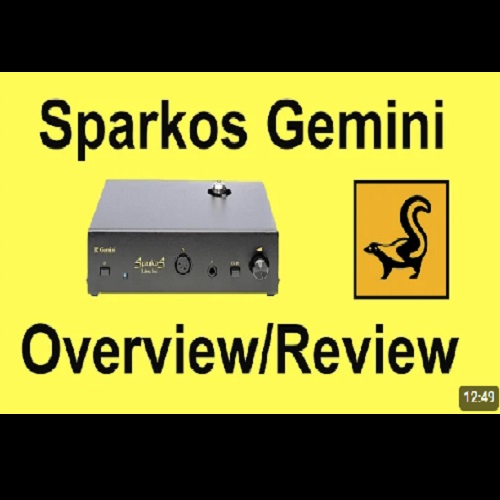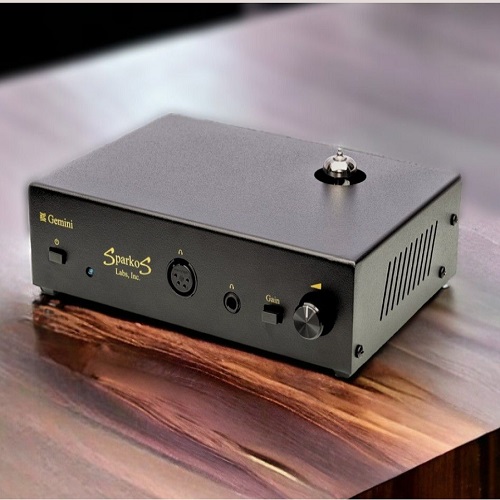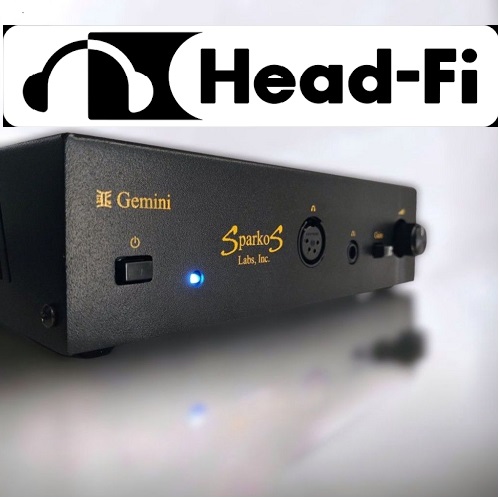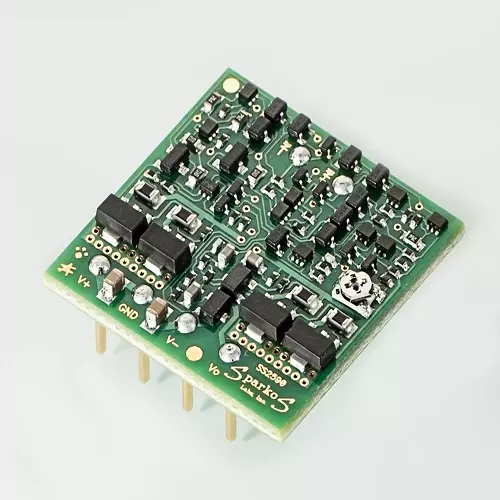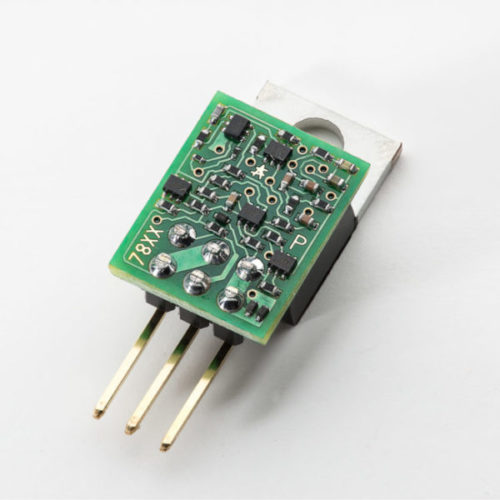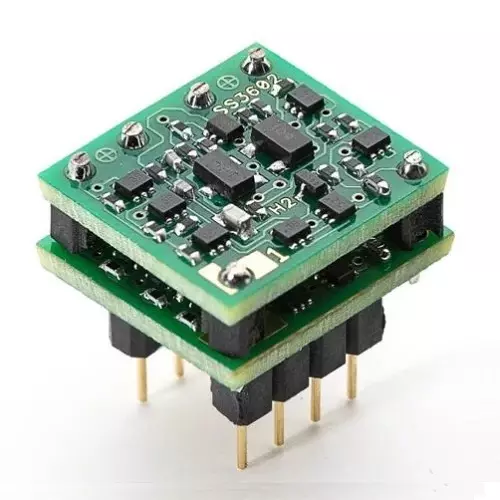The ultimate tube rolling platform for a customizable Hi Fi tube audio experience
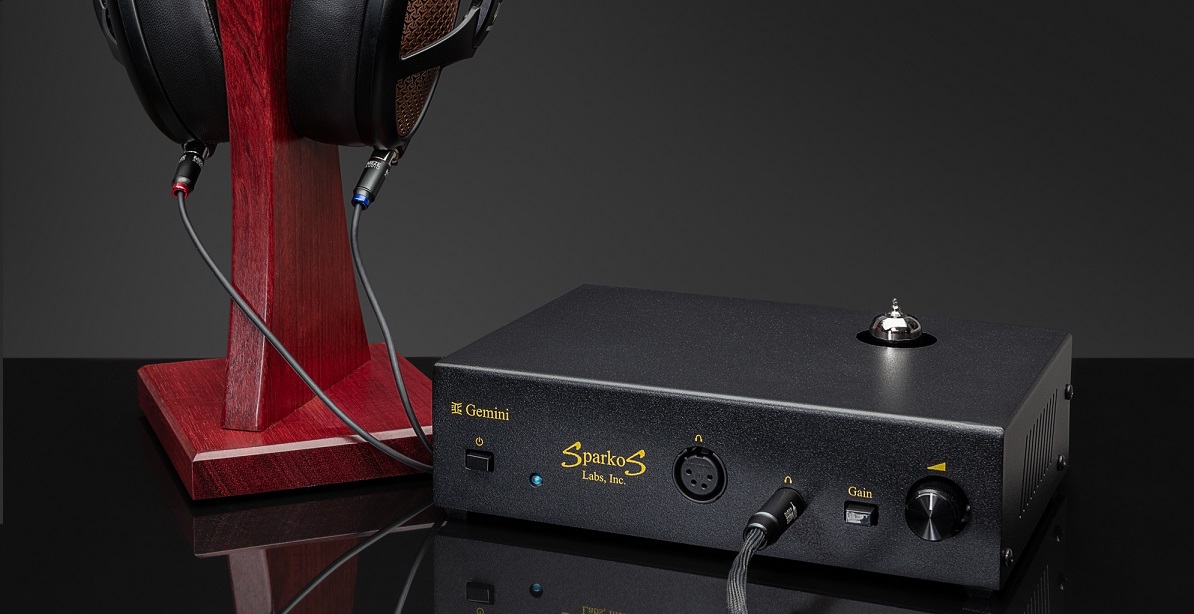
RCA Inputs
RCA Preamp Outputs
¼” Headphone Output
4 Pin XLR Headphone Output
Alps Blue Velvet Volume Control
Sparkos Labs SS2590 Discrete OPA Output Stage
Sparkos Labs Discrete Voltage Regulators
Zero Global Feedback
No Capacitors In The Signal Path
6922 Vacuum Tube Front-End
Allows For Tube Rolling
User Adjustable Tube Bias point
The Amount Of “Tube Sound” Is User Controllable
Tube Heater Soft Start
40 second Tube Warm-Up Delay
User Gain Control Button
User Selectable Input Attenuator Of -15dB
DC Protection For The Headphone Outputs
Very Low Output Impedance < .25 ohms
High Damping Factor
10Hz – 100KHz Frequency Response
Gain Of 12dB (Low Gain) And 21.5dB (High Gain)
Unloaded Cross Talk >100dB @ 1KHz
Power Out 2 Watts Max @ 32Ohms
Power Out 750mW Max @300 Ohms
15V Peak Output Voltage
250mA Peak Output Current
THD 0.1% - 1.5% Depending On Settings
9” Wide, 6” Deep, 2.5” Tall
120 / 240 VAC Operation
Reviews of the Gemini.
Customizable Tube Hybrid Design
Tube Rolling
Sonic customization
The next level of customization, is through the front panel gain button. Each tube type will have its own unique sonic signature, but exactly how much of that sonic signature will be imparted onto the sound will depend on exactly how hard the tube is having to work. A front panel gain button provides easy, immediate control over how hard the tube has to work, how much gain it has, and how much of its unique sonic signature will come through in your listening experience.
The final level of customization, is control over the amount of current that the tube is biased at. This jumper-based user control will behave similarly to the gain button, but it will do so without actually changing the gain, or the perceived volume level that the user will experience. The amount of bias current doesn’t affect how hard the tube has to work like the gain button does, but rather, it defines for the tube what “work” even means in the first place.
A matrix of possibilities
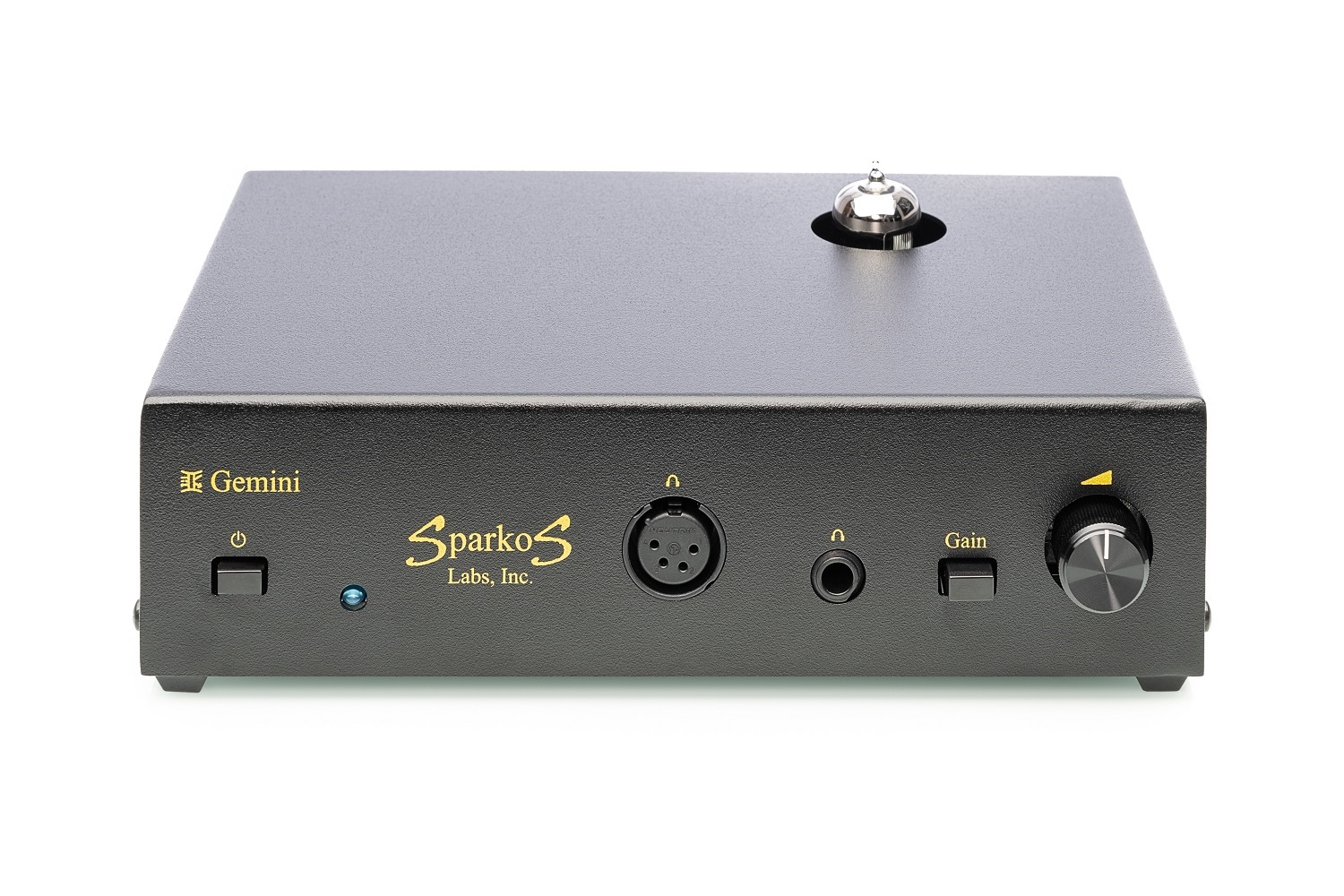
Design Features
Tube Type. The Gemini comes with a 6922 dual triode tube, which also goes by the name ECC88. In our opinion, it is the one that we think sounds the best. If you prefer a different tube type or want to experiment with your listening experience, the Gemini can run nearly a dozen different tubes and supports tube rolling.
Design Architecture. The tube inside the Gemini is in the front end, and will be the first thing that the incoming audio will hit right after passing through the Alps Blue Velvet volume control. We then extract the audio signal from the tube using current mirrors rather than coupling capacitors, and then apply that signal to some of our world class SS2590 discrete op amps for driving the headphone and RCA outputs. The amount of tube harmonics imparted into the sound will depend on how hard the tube is driven. The gain button on the front panel allows user control over this.
No capacitors in the signal path. At Sparkos Labs, we always say that “the best capacitor, is no capacitor.” Thus, the Gemini tube headphone amplifier does not have any coupling capacitors in the audio signal path. This is almost unheard of in tube designs. Coupling capacitors are typically used to block the large DC voltages that exist on the tube plates and the cathode when coupling the audio signal out of the tube. We took a different approach, and used a novel cascode Wilson current mirror to couple the audio signal out of the tube. We then made use of a DC servo to strip off the bias current, and leave only the audio signal. Therefore, there is no need to agonize over the coupling capacitor, its type or value, because it does not exist inside the Gemini.
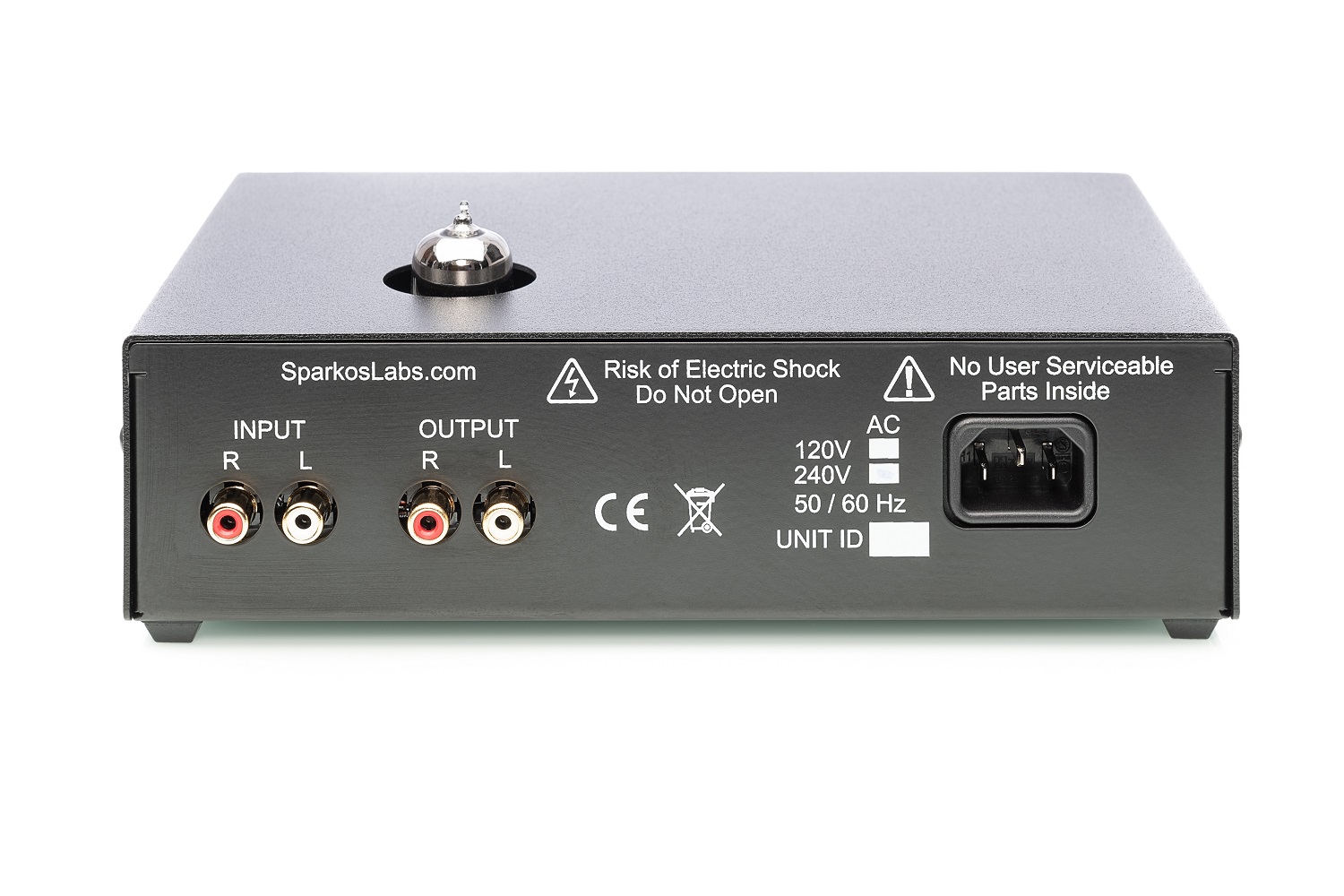
No Global Feedback. People like tubes because of the even order harmonics that they impart on the sound and that make up their sonic signature. We designed a tube hybrid amplifier, and we wanted the sonic signature of the tube to be evident. Feedback, while it totally has its merits, would serve to reduce the even order harmonics that the tube generates, reducing its impact on the overall sound. As such, we opted to have no global feedback inside the Gemini. Our SS2590 discrete op amps have their own local feedback to set their gain as all op amp circuits require, but the tube portion and the amplifier as a whole do not have any global negative feedback.
Alps Blue Velvet volume control. These things are the finest volume control in the industry with the best channel matching, the best feel, and the lowest noise. We evaluated several other volume controls from various other manufacturers, but we kept coming back to the Alps Blue Velvet. There are reasons why everyone uses these things, and why they cost so much.
Gain Button. There is a front panel gain button on the Gemini that will change the gain and the perceived volume level by 10dB. The real purpose of the gain button, however, is to control how much of the tubes’ sound signature will be evident in your listening experience. For example, if we are listening to music at our normal volume level, and then we drop the gain down using the gain button, but then turn the volume back up with the volume control to the volume level that we started out with, there will now be 10dB more of the tubes’ sonic signature imparted into the sound. The converse is also true. If we increase the gain, and then turn the volume back down to where it was, there will be 10dB less of the tubes sonic signature imparted on the sound. So the real purpose of the gain button is not to control the gain at all, but rather, to give you an easy way to customize and control your tube headphone amplifier listening experience.
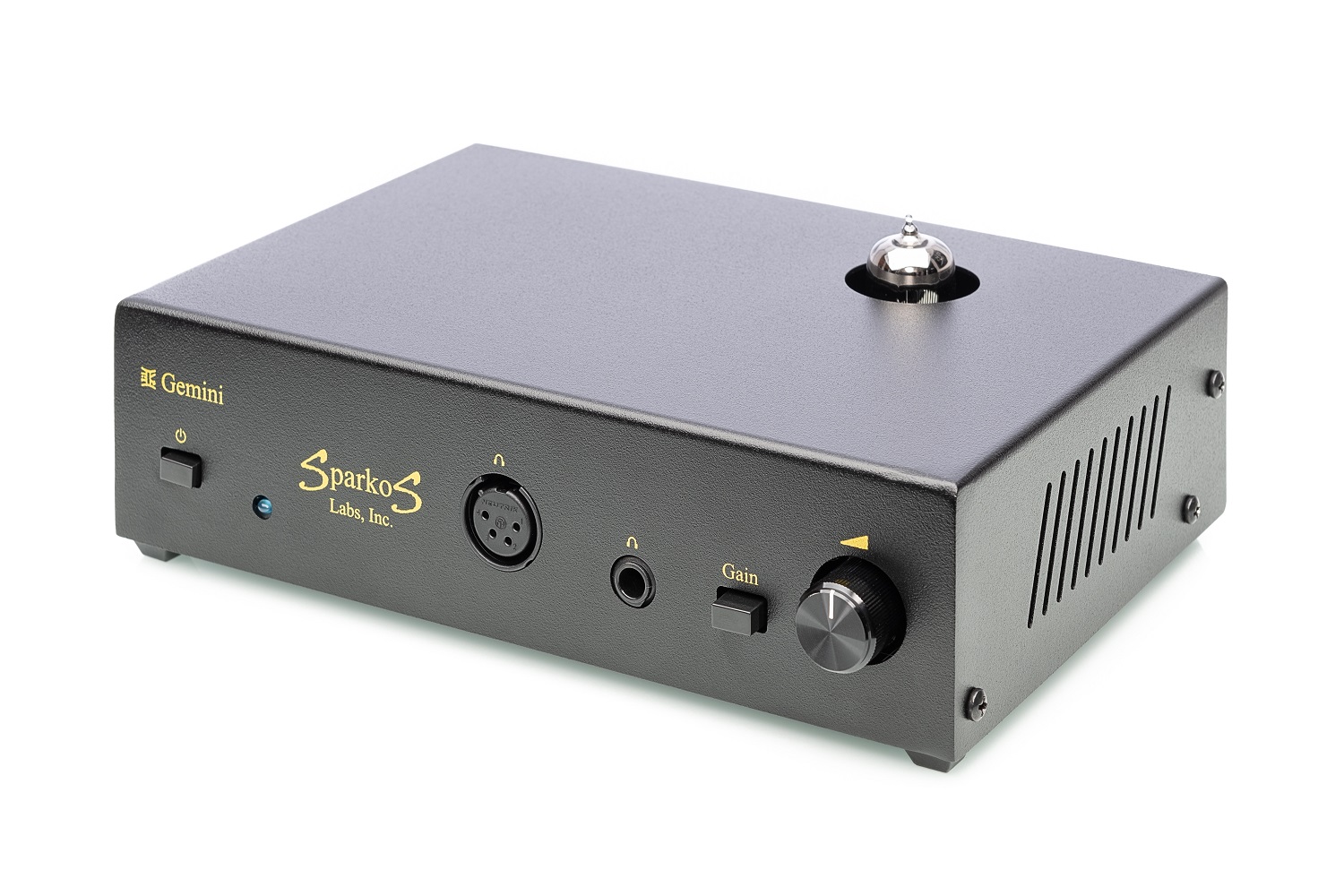
Even more flexibility
Jumper Selectable Input Attenuator If you have some “hot” source gear that tends to be too loud once the volume control is moved past the 9:00 position, we have a fix for that. There is a built-in -15dB input attenuator that can be enabled by removing some jumpers that will cool off hot source equipment and give you a lot more room on the volume control. The Gemini is shipped with this attenuator disabled (Jumpers in). These jumpers can be removed to enable the attenuator if needed. See the section about jumpers inside of the Gemini in the user manual to see how to use it.
Output connectivity. The inclusion of both ¼ inch and 4 pin XLR headphone output connectors ensures compatibility with pretty much any headphone that you own, and eliminates the need for adapters. Additional RCA preamp outputs allow the Gemini to be used as a preamp to impart tube sonics into your system that runs speakers rather than headphones. The RCA outputs are down 12.5 dB from the headphone outputs, and they will be disabled when headphones are plugged into the ¼” headphone jack on the front of the unit.
List of tubes that can be used in the Gemini for tube rolling
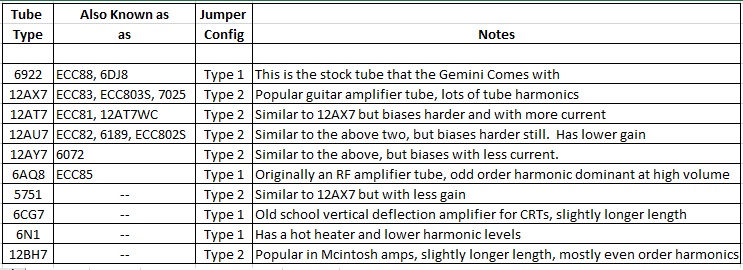
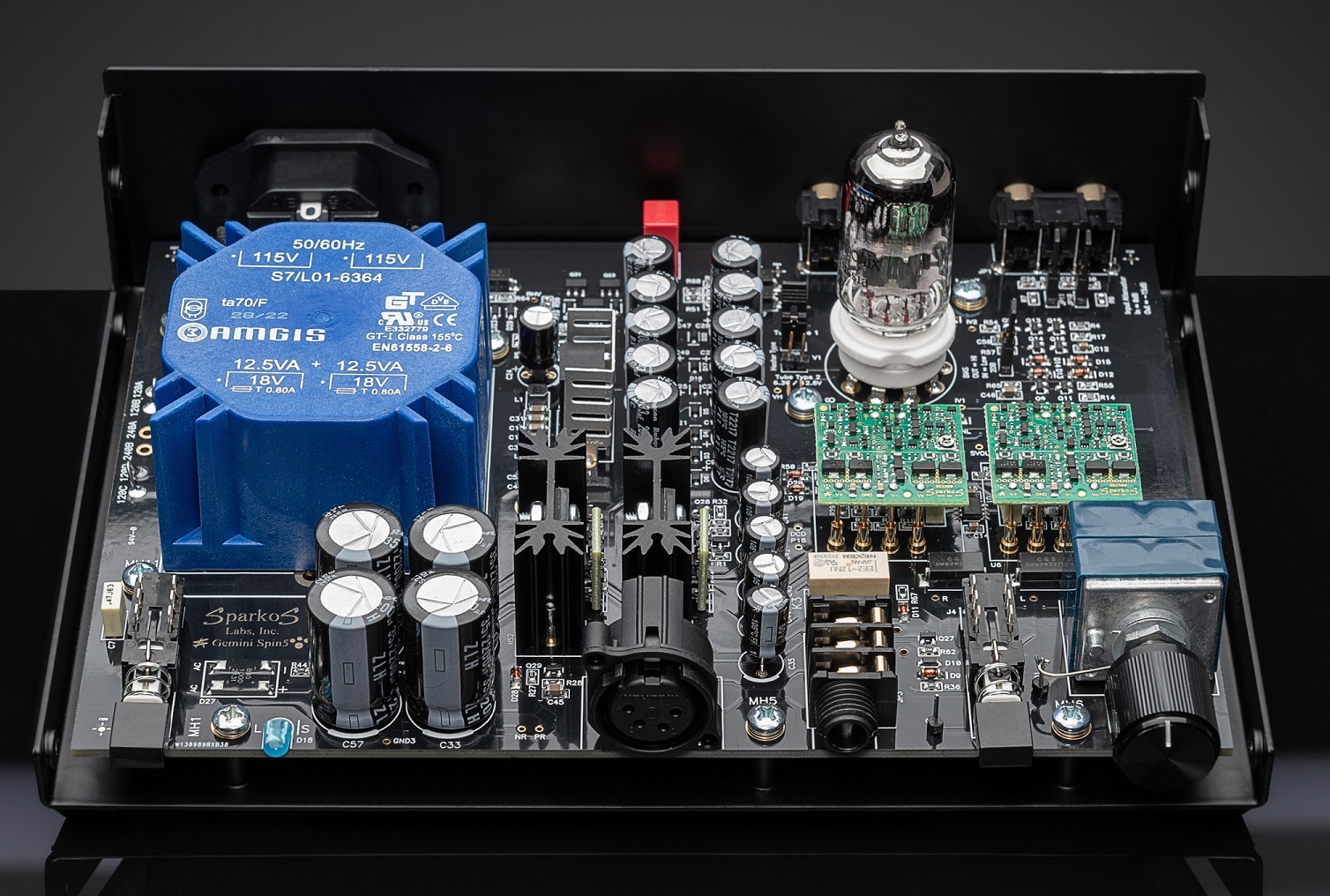
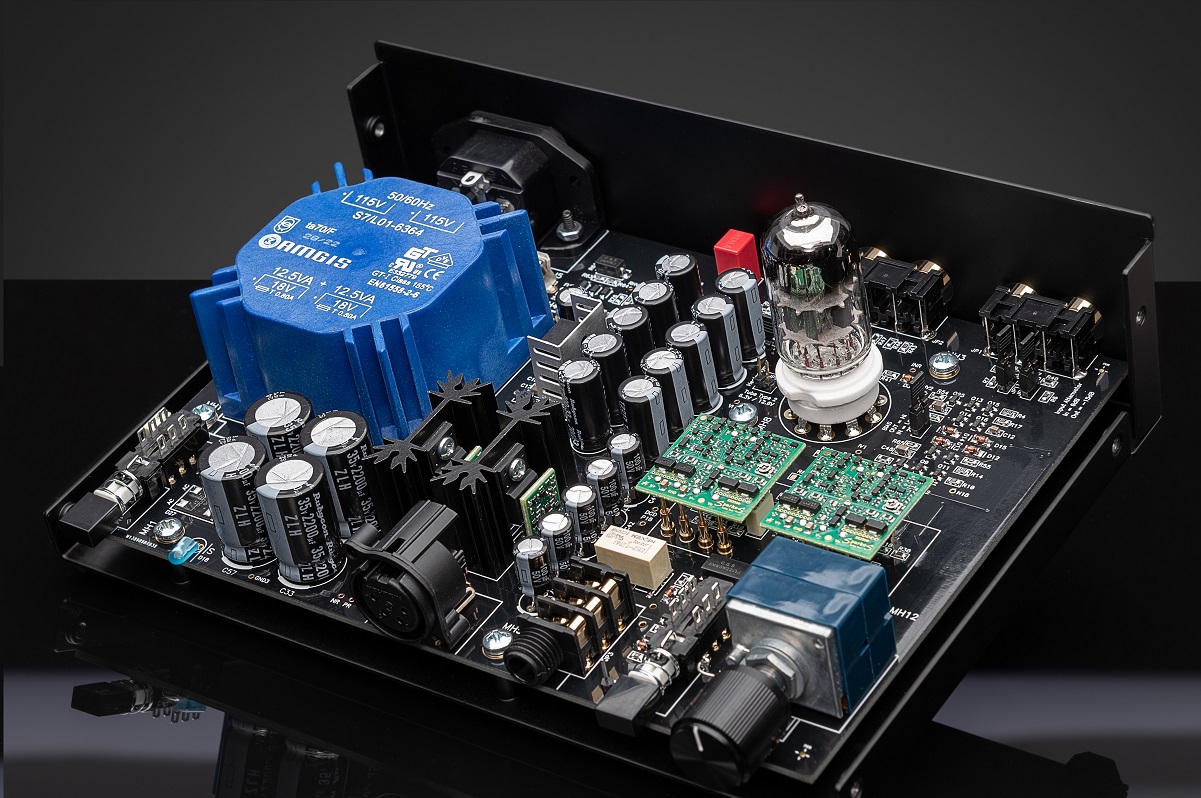
Risk Free 30 day In Home Auditions. Try out the Gemini on your rig, with your headphones, for 30 days with a money back guarantee. Two year warranty period.
Learn more about our discrete op amps and voltage regulators that power the Gemini.
You know what to do.



